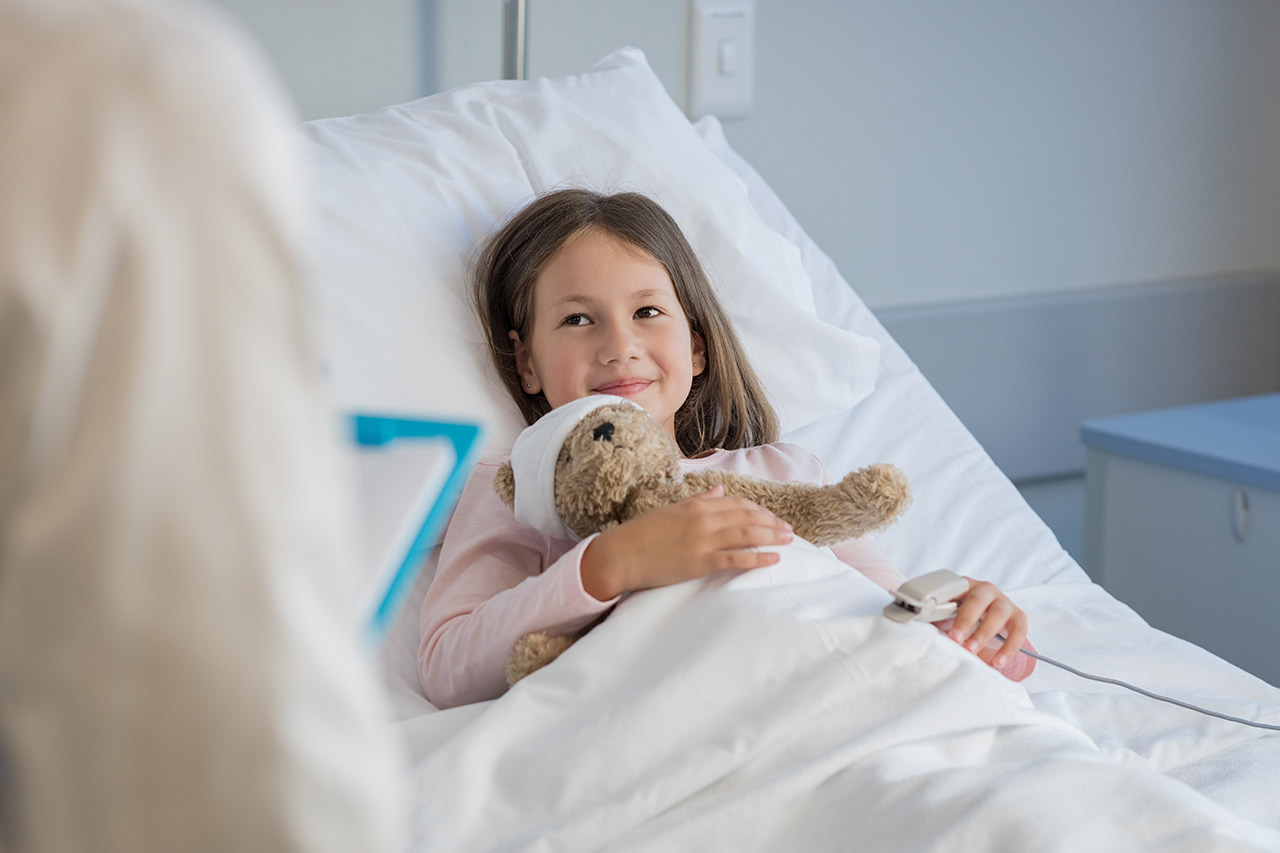Childhood cancer: what key differences are there to treatment in adults?

Every year many children are affected by cancer. Thanks to improved treatment regimens in childhood cancer, most of them survive longer than 5 years. What does treatment look like for children? What are differences in fighting the disease compared to adults? In this article, we give you an overview of the patient pathway for children with cancer.
Key facts about childhood cancer
Childhood cancer accounts for around 1% of all cancer diagnoses (data from UK, Germany, USA). Even though this is a very rare type of cancer, this corresponds to an incidence rate of about 14/100,000 children per year. Globally, 300,000 new cases are reported every year. Childhood cancer tends to be diagnosed often in the age of 0 to 4 years.
Most common cancer types occurring are leukaemia, central nervous system (CNS) tumors, lymphoma, but also sarcoma. Carcinoma, on the contrary, are very rare.
The good: advances in treatments have led to the situation that most of all diagnosed children survive the disease. Since the 70s, mortality rates have continuously been decreasing and 5-year survival rates increasing. Nowadays, more than 80% of the patients are alive after 5 years, survival rates have doubled in the past 30 years. The 10-year survival is up to 5% lower. Unfortunately, there are some variation in these numbers depending on the cancer type.
A promising future for patients
Existing treatments for childhood cancer
Children are mostly treated in highly specialized cancer centers or hospitals, where in most cases they run clinical trials. As such, most up-to-date treatment and care can be guaranteed to the children.
The treatment of childhood cancer is pretty much standardized. More than 90% of the patients receive chemotherapy at first, as this treatment is very effective against quickly growing cancers, which is often the case in children. Most patients are cancer free after this first therapy and only a minority will move into later lines of treatment. In later lines, radiotherapy is more often used (to be avoided in earlier treatment phases as it has severe side effects in children), new treatments such as tumour agnostic options are now also available and effective in some tumour types.
For the treatment of children, a multidisciplinary and specialized team is needed. The paediatric oncologist of course plays a major role and is complemented by specialized oncology nurses, radiotherapists/surgeons and others. Psycho-social workers, nutritionists, psychologists, or specialized associations are also key to support the entire family throughout this trying process.
Differences to adults
The types of cancers are different. As described before, children often suffer of fast-growing cancers such as leukaemia, or CNS tumours, whereas cancer types in adults are much different, carcinoma play a more prominent role.
Risk factors don’t really exist for children. Unlike in adults, the risk factors to develop cancer are not well understood. Lifestyle, or environmental factors are rather important risk factors for adults, but do not play much of a role in children. Only in very rare cases inherited genetic mutations are the underlying cause for childhood cancer. In essence, it is not possible to prevent cancer in children.
Treatments are often much more successful in children. This is probably linked to the fact that cancer types are different and often fast growing, treatments are more intense in children as they better cope with these high-intense treatments as contrary to adults. Also, usually children do not have co-morbidities as adults that interfere with the treatment.
Prognosis is more of a problem in children. As treatments are often aggressive and children are still growing, a dense long-term follow up is required. This is needed in order to detect potential late side effects of treatments or relapse as early as possible.
In conclusion, childhood cancer is still and fortunately very rare. Even more, highly specialized treatment centres and effective treatment options have greatly improved mortality and long-term survival rates. Still, more research and further advancement is needed to improve the situation for our most vulnerable patients.
Interested in this subject? Discover our achievements in patient pathway consulting and our position paper on innovation in oncology.
About the author
Volker, Great Explorer Oncology in Alcimed’s Healthcare team in Germany
Do you have an exploration project?
Our explorers are ready to discuss it with you